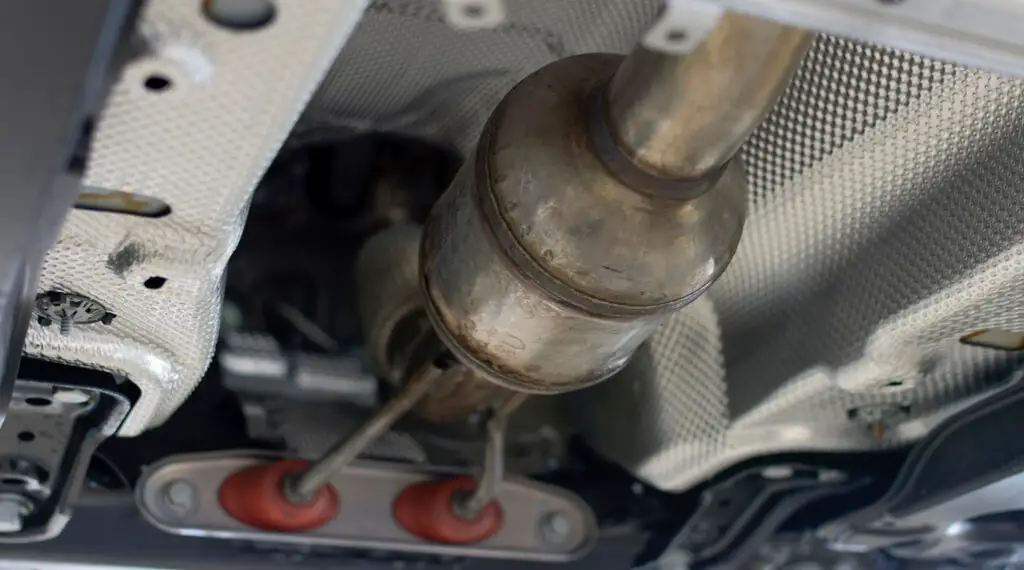A stolen catalytic converter is a major inconvenience (and cost) for vehicle owners, especially if you own a vehicle that is high on a thieves’ list of target vehicles. Passenger vehicle makes like Toyota, Lexus, and Honda models are highest on the list of vehicles most likely to be targeted, but any make and model of vehicle could be targeted.
In this article, we are going to show you why you should etch your catalytic converter as well as show you how to etch your catalytic converter.
When combined with high visible painting, and other theft prevention techniques, you can drastically reduce being a victim of catalytic converter theft. The advice in this article and across our website can potentially save you thousands of dollars in replacement costs and hours of frustration.
Why do thieves steal catalytic converters?
There are many reasons catalytic converters are targeted for theft, but primary reasons include the inclusion of expensive metals in the converter itself along with quick cash when a thief sells the stolen converter to a scrap yard, or scrap metal facility. In some cases, thieves get upwards of several hundred dollars, especially for passenger cars like the Toyota Prius whose converters contain more precious metals than others.
If you own a Prius, you will definitely want to take steps to protect your car as not only are they the top passenger car being targeted, but replacement costs can be upwards of several thousand dollars and may or may not be covered by your auto insurance.
While car thieves steal vehicles, catalytic converter thieves can profit often many times more because they can steal several over the course of a few hours. And, getting caught with stolen catalytic converters often has less sentencing than auto theft.
What is catalytic converter etching?
Having your vehicle’s catalytic converter etched (or marked) is a theft prevention method that makes it harder for a thief to resale the catalytic converter to legitimate scrap metal, or parts dealers.
When a catalytic converter is etched with your vehicle’s identification number (known as its VIN number) and/or license plate number in a highly visible spot, it is believed to help deter thieves and reduce the chance of your catalytic converter being stolen.
You can buy a commercial catalytic converter etching kit, or follow our DIY solution below which just involves a can of high-temperature paint and a cheap engraving tool.
Does etching prevent catalytic converter theft?
An etched catalytic converter is believed to deter theft, but etching your vehicle’s VIN number and/or vehicle’s license plate number on your catalytic converter is not enough to guarantee your catalytic converter won’t be stolen.
Many thieves, especially those who steal when it is dark out may not see the etching until after they have taken it. That is why we recommend, in addition to etching, using high-temperature paint to cover your catalytic converter in bright orange or yellow colors. This makes it harder for the thieves to resale it, and more likely they or their buyers could get caught.
Etching can also be sanded out by thieves to avoid detection. In many cases, a legitimate metal reclaiming shop will notice this, but not always. Still, some thieves may pass on an etched converter but it is always better to use multiple strategies for preventing theft.
Etching is just one of them.
How to etch a catalytic converter
Etching, or engraving a catalytic converter is something that you can easily do yourself. It simply involves using an engraving tool that you can readily pick up at your local hardware store or on Amazon.
Tools you need
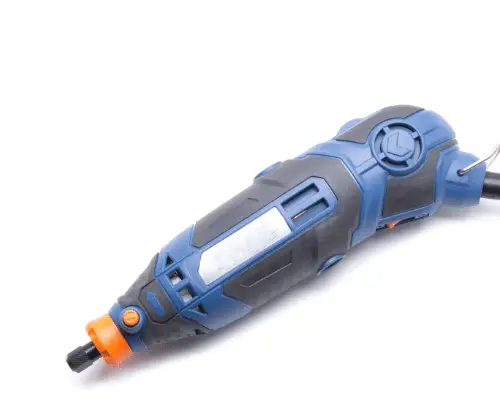
You will want to pick an etching tool that is made for metal and comes with tungsten carbide steel engraving bits.
Dremel makes one of the best tools for etching, engraving, grinding, and drilling on the market. Their rotary tool kit / 160-piece attachment kit with the flex shaft attachment is beyond amazing. We use it for a lot of projects, not just etching.
If you are looking for just an etcher and bits, Toolspace makes a reliable, no-frills, etcher that comes with 4 tungsten carbide steel tips plus letter and number stencils so your letters and numbers look great. It is a lot cheaper than the Dremel, but unlike the Dremel, it only has one purpose.
Finally don’t forget to wear safety glasses, as small pieces of metal can fly off during the etching process and could cause serious injury.
Preparation
Locate your catalytic converter. It will be located near the engine block underneath the car, or along with the exhaust system that runs from your engine to the rear of your vehicle.
If your catalytic converter has signs of rust, wear, or is oily, you can use a little bit of sandpaper and cleaner to clean it up a bit, especially if you plan on spray painting your converter with high heat paint before etching.
Proper preparation ensures that the paint will adhere properly and your etching will stick out.
Note that some vehicles may have two catalytic converters. If you are unsure where your catalytic converter is located you can check with your owner’s manual, online, or check with auto repair shops or a muffler shop in your area.
Etching your catalytic converter
Once you have your catalytic converter painted (optional) and prepped for etching, locate your vehicle’s VIN number.
Locate your Vehicle Identification Number (VIN)
The VIN number on most cars can be found on your driver’s side door frame once the door has been opened. It may also be on the dashboard on the driver’s side as you look down from outside the car. It should look like the following:
VIN numbers explained:
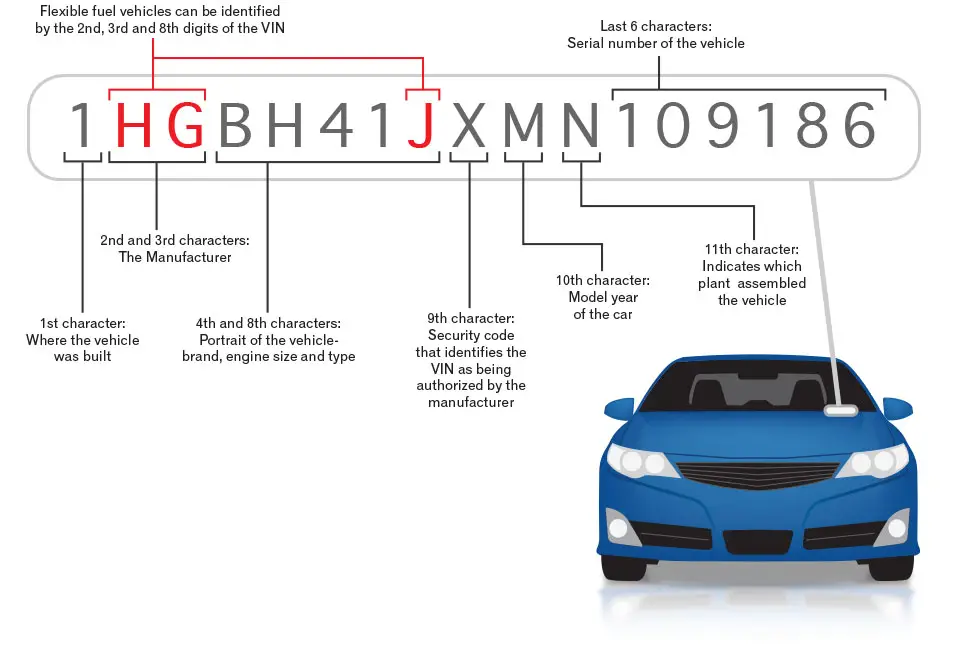
Common VIN locations:
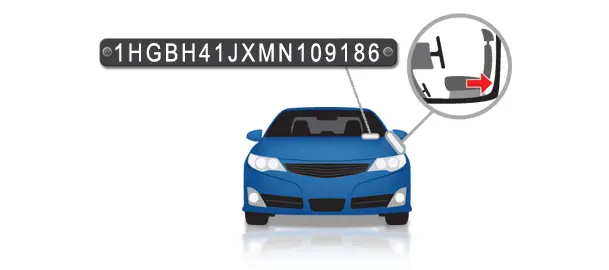
Your VIN number may also be obtained from your insurance card or insurance policy paperwork, vehicle title, or registration.
Etch the VIN and license plate number
Now use the engraver tool to mark the VIN and plate number on your car. Make the markings as large as you can. Be sure to follow the specific instructions for your etcher.
Instead of etching the entire VIN, we recommend etching the last 8 characters of the VIN, along with the plate number.
The last 8 characters of the VIN include the model year of the car, along with its serial number. The rest of the VIN contains information about the make and model of the code, plus where it was built. This will allow you to write the character much bigger making them more noticeable versus etching smaller text to fit the whole VIN number in.
Etching the plate number accomplishes the same thing as the full VIN but makes the car’s information and owner easier to track down by the police department should they recover your catalytic converter later, or want to verify it was stolen before making arrests. They simply look up the plate number in their database and can track the owner of that plate for additional questions the police department may have as part of their investigation.
Alternate solutions for engraving catalytic converters
Look for free catalytic converter engraving events
If you don’t want to mess with engraving your catalytic converter yourself, many cities or local businesses offer an annual or semi-annual free community event where you can have your converter etched and possibly painted.
You can also search Google, for “catalytic converter engraving or etching near me“, to find a list of mechanics and muffler shops that may provide free etching or for little cost. Especially if you are already there having other services completed on your vehicle. You may even be able to have a cage installed while there, but that is often a paid service.
You could also check with your local police department to see if they have a catalytic convert theft and catch program to see if they offer a free etching during special theft prevention weeks. Theft of catalytic converters is high and it is a problem for law enforcement agencies and insurance companies.
MasterGuard CatEtch / CatGuard catalytic converter labels
Another clever solution is to check out the ultra-destruct label system by Retainagroup. This is a catalytic converter label that leaves behind a unique code and URL even if an attempt is made to remove the label. Once your custom label is applied to the converter, a liquid etcher is applied to the cut out in the label to chemically etch your code and URL into the metal so if the label is removed, the etching is still visible.
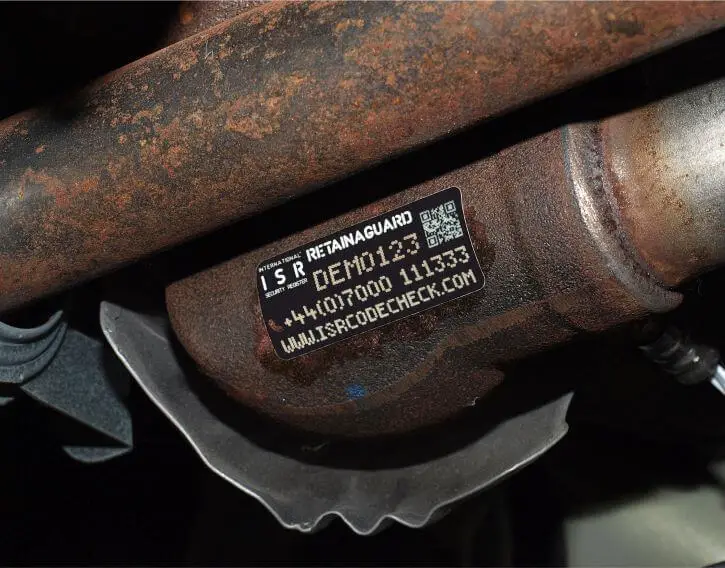
Your unique code is then registered into the International Security Register (ISR) which is accessible 24 hours a day and is a preferred specification for security etching and lookup of ownership information. It is often used by your police department should they find a vehicle that contains etching.
While we have not personally used this product, it seems like an easy way to mark your catalytic converter and register it. Registering it will possibly provide police with additional information should a thief steal your converter and happen to get caught.
If we can locate a couple to see how well catalytic converter labels work and how deep the etching is we will update this post. Unfortunately, we did not find an easy way to obtain one through online ordering without going through a sales rep, so they may only be available to dealers.
Frequently Asked Questions
Should I get my catalytic converter etched?
Yes. And if you can find a catalytic converter shield for your vehicle you should highly consider that as well. While etching won’t prevent your catalytic converter from being stolen, it does make your car more likely to be skipped when a thief sees the etching along with the spray-painted converter.
Without etching, there are no markings on the catalytic converter thus making it easier for the thief to resale it for quick cash.
Do police departments encourage catalytic converter etching and marking programs?
Yes. In fact, many police departments host community Etch and Catch programs where the goal is to paint catalytic converters with high visibility, temperature resistant paint for prevention purposes, and then etch the VIN number making it harder for thieves to sell the catalytic converter, or track stolen converters back to the original vehicle to help with the prosecution of criminals.
Final Thoughts
Catalytic converter theft is often a regional problem that is higher in some areas than others. If you are curious how bad the theft of catalytic converters is in your area, you can check with your local muffler shop or law enforcement agency as they are best informed and can tell you if you have a problem in your area or which particular catalytic converter is most sought after.
Overall, theft of catalytic converters is a national problem and even a statewide problem. Some states and cities are more aggressive than others when it comes to helping protect vehicle owners and possibly deter those who want to commit crimes.
Most legislation is targeting the buyers of stolen catalytic converters mainly those who don’t positively identify the seller. The whole idea is to make it more trouble than its worth to steal and resale catalytic converters. Having your catalytic converted etched can help fight this type of crime.

